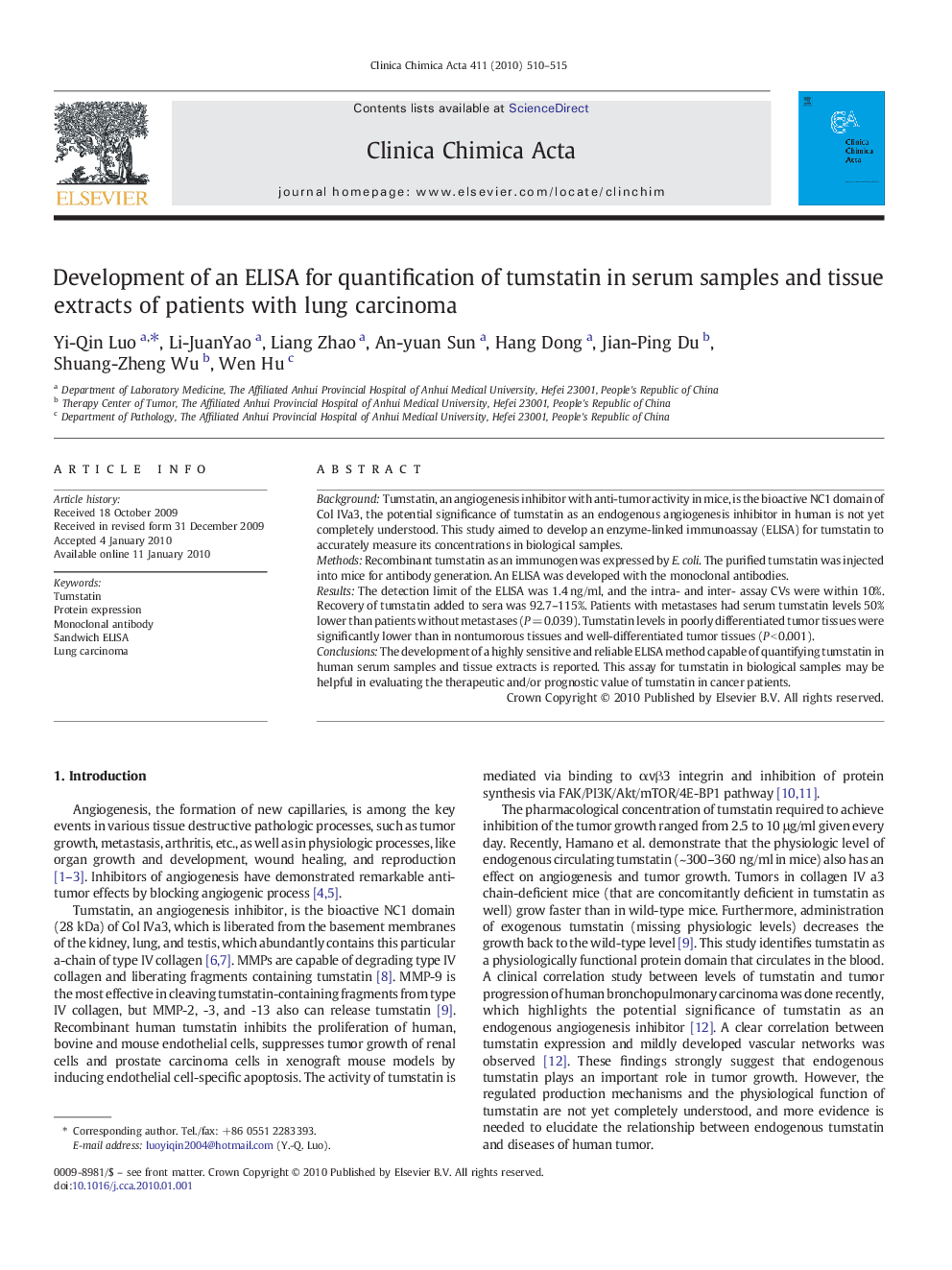| Article ID | Journal | Published Year | Pages | File Type |
|---|---|---|---|---|
| 1966235 | Clinica Chimica Acta | 2010 | 6 Pages |
BackgroundTumstatin, an angiogenesis inhibitor with anti-tumor activity in mice, is the bioactive NC1 domain of Col IVa3, the potential significance of tumstatin as an endogenous angiogenesis inhibitor in human is not yet completely understood. This study aimed to develop an enzyme-linked immunoassay (ELISA) for tumstatin to accurately measure its concentrations in biological samples.MethodsRecombinant tumstatin as an immunogen was expressed by E.coli. The purified tumstatin was injected into mice for antibody generation. An ELISA was developed with the monoclonal antibodies.ResultsThe detection limit of the ELISA was 1.4 ng/ml, and the intra- and inter- assay CVs were within 10%. Recovery of tumstatin added to sera was 92.7–115%. Patients with metastases had serum tumstatin levels 50% lower than patients without metastases (P = 0.039). Tumstatin levels in poorly differentiated tumor tissues were significantly lower than in nontumorous tissues and well-differentiated tumor tissues (P < 0.001).ConclusionsThe development of a highly sensitive and reliable ELISA method capable of quantifying tumstatin in human serum samples and tissue extracts is reported. This assay for tumstatin in biological samples may be helpful in evaluating the therapeutic and/or prognostic value of tumstatin in cancer patients.
